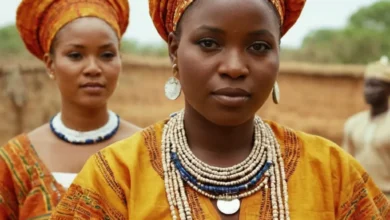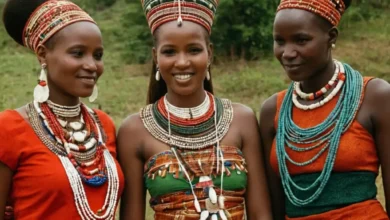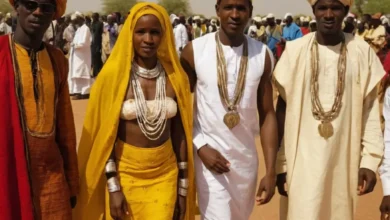Somali Traditional Clothing
The Somali people, renowned for their resilience and rich cultural tapestry, have a vibrant tradition of clothing that reflects their nomadic heritage, Islamic beliefs, and artistic sensibilities. From the colorful and intricately woven dirac to the elegant guntin, Somali attire is not merely clothing; it is a living testament to their history, values, and identity.
This article delves into the fascinating world of Somali traditional clothing, exploring its diverse styles, symbolism, and the profound influence of both nomadic life and Islamic principles on its evolution.
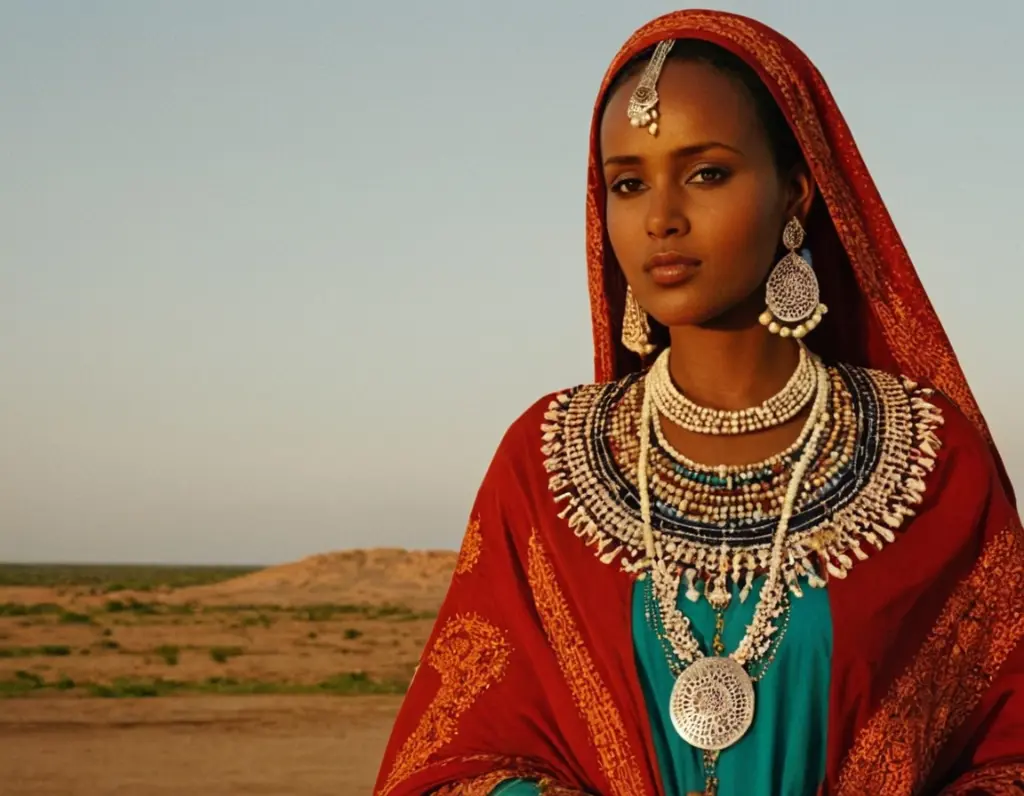
A Symphony of Colors and Textures: The Somali Dress
Somali clothing is known for its vibrant colors, intricate patterns, and luxurious fabrics. While the specific styles may vary between regions and tribes, there are some common elements that define Somali traditional attire. The dirac, a long, flowing garment worn by both men and women, is a cornerstone of Somali dress.
The dirac is typically made from cotton, silk, or a combination of both, and it is meticulously woven or embroidered with intricate patterns. These patterns often draw inspiration from nature, featuring floral motifs, geometric shapes, and animal designs.
See also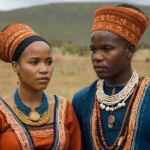 South African Traditional Dress: Reflecting a Diverse Heritage
South African Traditional Dress: Reflecting a Diverse Heritage
For women, the dirac is often worn with a goon (a shawl or scarf), which can be made from the same material as the dirac or from a different fabric. The goon is draped elegantly over the head and shoulders, adding a touch of sophistication and modesty.
The guntin, a long, flowing dress worn by women, is another essential piece of Somali attire. The guntin is typically made from fine silk or satin and is adorned with intricate beadwork and embroidery. It is often worn on special occasions and festivals, signifying elegance and grace.
Embracing Modesty and Respect: The Influence of Islam
Islam has played a significant role in shaping Somali traditional clothing, emphasizing modesty and respect. The long and flowing garments like the dirac* and guntin are a testament to the Islamic principle of covering the body, particularly for women.
The goon also serves as a symbol of modesty and respect for cultural norms. While the attire adheres to Islamic principles, it is also deeply intertwined with Somali cultural identity and the practicalities of nomadic life.
See also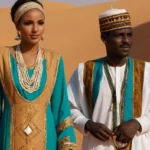 Sudanese Traditional Clothing: A Blend of Arab and African Influences
Sudanese Traditional Clothing: A Blend of Arab and African Influences
A Nomadic Spirit: Practicality and Resilience
The Somali people have a rich nomadic heritage, and their clothing reflects the demands of a life spent traveling across vast and often harsh landscapes. The dirac, with its loose-fitting design, allows for ease of movement and comfort in the hot desert climate.
The goon offers protection from the sun and sand, while its versatility allows for different draping styles depending on the weather and occasion. The durable fabrics and simple designs of Somali clothing ensure longevity and practicality, making them suitable for both everyday life and special events.
Weaving Stories: The Art of Somali Embroidery and Beadwork
The intricate embroidery and beadwork that embellish Somali clothing are not merely decorations; they are intricate narratives that weave stories of history, culture, and tradition. These patterns often represent family crests, tribal affiliations, and significant events.
The colors used in embroidery also hold meaning, with specific hues signifying different emotions, social status, and occasions. For example, the color red is associated with strength and courage, while blue symbolizes peace and serenity. The artistry of Somali embroidery and beadwork is passed down through generations, ensuring that these stories continue to be told and cherished.
A Journey Through Time: The Evolution of Somali Traditional Clothing
Over time, Somali traditional clothing has evolved, adapting to changing societal norms and influences. The introduction of new fabrics and techniques, particularly during the colonial period, has enriched the diversity of Somali attire.
Modern interpretations of traditional styles are also emerging, blending elements of traditional design with contemporary fashion trends. While embracing modernity, the core values of modesty, respect, and heritage remain at the heart of Somali clothing.
The Importance of Traditional Attire in Contemporary Somalia
Somali traditional clothing continues to play a vital role in contemporary Somali society. It is worn on special occasions such as weddings, festivals, and religious ceremonies. The dirac and guntin are also worn as daily attire in many communities, especially in rural areas. The vibrant colors and intricate designs of Somali clothing are a symbol of pride and cultural identity.
They remind the Somali people of their rich heritage and their shared history. In the face of globalization and the influence of Western fashion, Somali traditional clothing remains a powerful symbol of resilience and cultural continuity.
FAQs:
What are some popular colors used in Somali traditional clothing?
Somali traditional clothing is known for its vibrant colors. Some popular hues include:
- Red: Symbol of strength, courage, and passion.
- Blue: Represents peace, serenity, and tranquility.
- Green: Associated with nature, growth, and prosperity.
- Yellow: Symbolizes joy, happiness, and warmth.
- Purple: Represents royalty, wisdom, and spirituality.
What are some traditional Somali accessories?
Somali women often wear beautiful and ornate accessories with their traditional clothing. Some popular items include:
- Jewelry: Earrings, necklaces, bracelets, and anklets are made from gold, silver, beads, and precious stones.
- Headscarves: The goon is a staple accessory, and it comes in various colors, patterns, and fabrics.
- Bags: Traditionally woven or embroidered bags are used for carrying personal items.
- Sandals: Leather or fabric sandals are worn with both men’s and women’s attire.
Where can I find Somali traditional clothing?
You can find Somali traditional clothing in various places, including:
- Somali communities: Many Somali communities around the world have shops and markets that sell traditional clothing.
- Online retailers: Several online stores specialize in selling Somali traditional clothing, often offering a wide range of styles and sizes.
- Cultural events: Many cultural events and festivals feature Somali traditional clothing vendors and showcases.
Somali traditional clothing is much more than just fabric and threads; it is a tangible embodiment of their vibrant history, nomadic heritage, and enduring cultural values. From the intricate embroidery and beadwork to the practical and elegant designs, Somali attire is a testament to the artistic talent and resilience of the Somali people.
As Somali communities around the world embrace modernization, it is crucial to preserve the rich traditions and artistry that have shaped their clothing and identity. By celebrating Somali traditional clothing, we honor the past, embrace the present, and contribute to the continuity of a vibrant cultural heritage.
